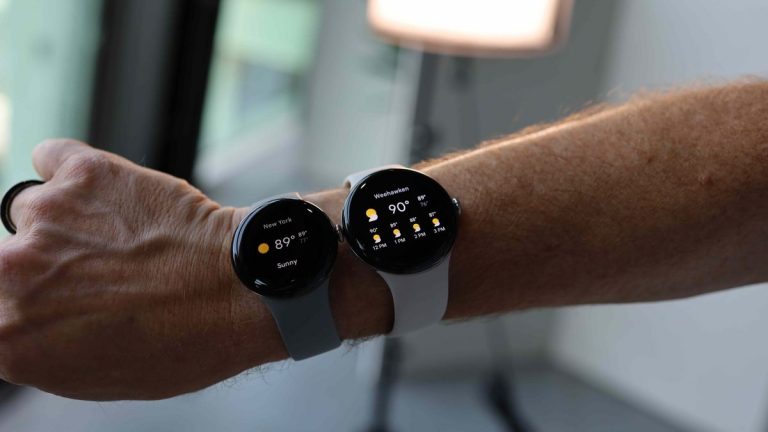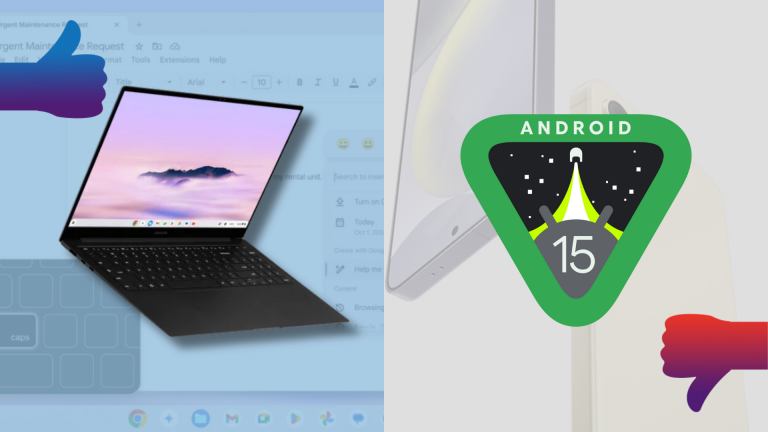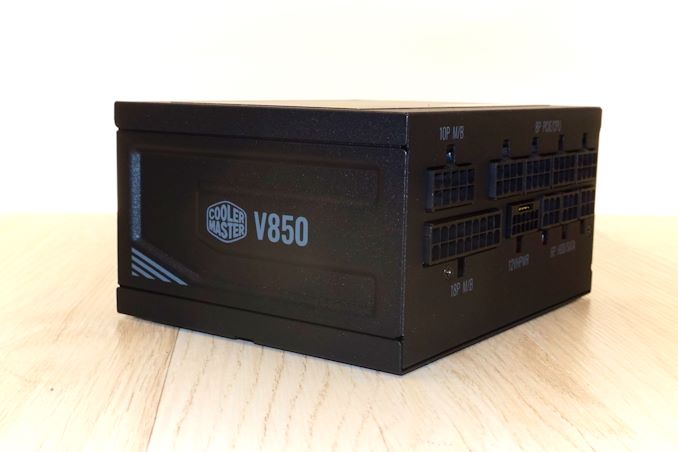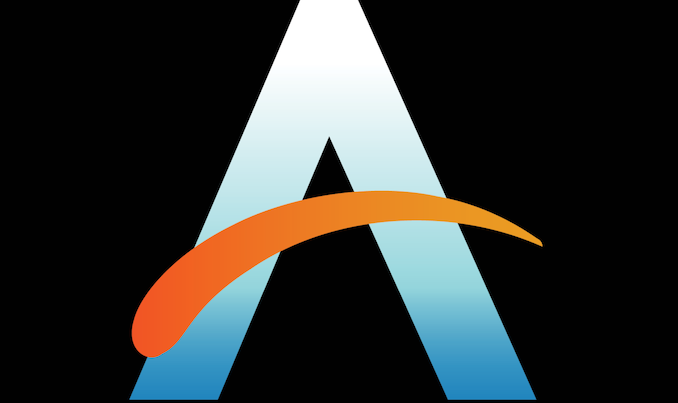The Best Cheap Desktop PCs for 2024
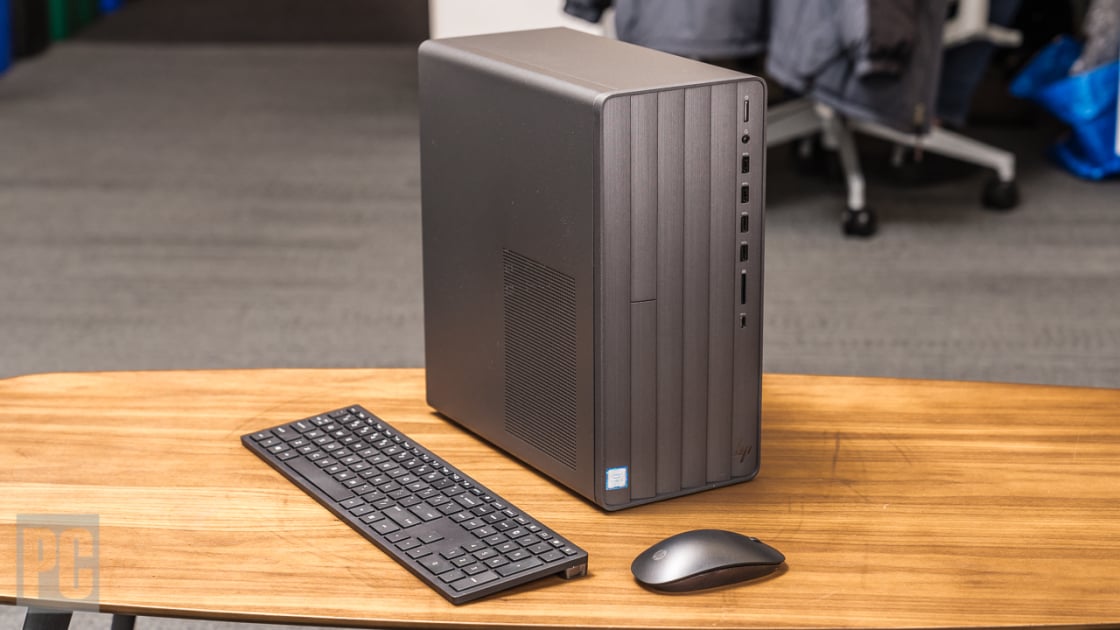
Deeper Dive: Our Top Tested Picks

Best Budget Desktop for Most Users
Acer Aspire TC-1780-UA92
- Well-priced
- Front USB-C port and card reader
- Wi-Fi 6E
- Dual HDMI ports
Desktop Class
Mainstream
Processor
Intel Core i5-13400
Processor Speed
2.5 GHz
RAM (as Tested)
8 GB
Boot Drive Type
SSD
Boot Drive Capacity (as Tested)
512 GB
Graphics Card
Intel UHD Graphics 730
Operating System
Windows 11 Home
A few speed demons may complain that Acer’s Aspire TC-1780-UA92 has a merely adequate Intel Core i5 and integrated graphics that can’t play demanding games, but they’ll have a hard time finding anything else to gripe about for the price. This successor to our previous top cheap desktop continues to drive perky everyday performance, now with a 13th Gen chip and the latest wireless in Wi-Fi 6E. It even has two HDMI ports to boost productivity with a dual-monitor setup.
If you want an affordable yet capable PC, it’s hard to do better than this Aspire microtower. The TC-1780 has handy front-mounted USB 3.2 ports (both Type-A and Type-C) and a useful media card reader. Its storage and RAM are expandable, though the power supply lacks the GPU connector you’d want for a robust discrete graphics card, and Acer continues to resist the temptation to clutter the system with unwanted bloatware.
Learn More
Acer Aspire TC-1780-UA92 Review

Best Home-Office Budget Desktop
HP Pavilion Desktop TP01-2060
- Potent eight-core AMD Ryzen CPU
- Ample, upgradable storage
- Lots of front-panel ports
- Quiet operation
- Only one HDMI video output
- Wi-Fi 5, not 6
- Preloaded bloatware
Desktop Class
Mainstream
Processor
AMD Ryzen 7 5700G
Processor Speed
3.8 GHz
RAM (as Tested)
16 GB
Boot Drive Type
SSD
Boot Drive Capacity (as Tested)
256 GB
Secondary Drive Type
Hard Drive
Secondary Drive Capacity (as Tested)
1 TB
Graphics Card
AMD Radeon Graphics
Operating System
Windows 11 Home
Most budget desktops have adequate but not impressive horsepower. HP’s Pavilion Desktop TP01-2060 stands apart with a potent eight-core AMD Ryzen 7 processor, tempting users who plan to do a bit of photo or video editing or other digital content creation in addition to routine productivity and online tasks, and its dual storage drives (a 256GB SSD plus 1TB hard drive) ensure you won’t run out of room. Five USB 3.2 ports (four Type-A and one Type-C) are conveniently located up front.
Power users with not-so-powerful wallets will find the Pavilion fills the bill, though it won’t support a dual-monitor setup (it has only one HDMI monitor port rather than two) and its Wi-Fi 5 networking means slower downloads than Wi-Fi 6 or 6E. If you can live with those limitations, the compact and quiet HP is a winning choice.
Learn More
HP Pavilion Desktop TP01-2060 Review

Best Budget All-in-One Desktop for Most Users
Lenovo IdeaCentre AIO 3i
- Solid screen for the money
- Bundled mouse and keyboard
- Decent speakers
- Plenty of ports
- No USB-C ports
- Lackluster CPU performance
Desktop Class
All-in-one
Processor
Intel Pentium Gold 7505
Processor Speed
2 GHz
RAM (as Tested)
16 GB
Boot Drive Type
SSD
Boot Drive Capacity (as Tested)
1 TB
Optical Drive
DVD+/-RW
All-in-One Screen Size
22 inches
All-in-One Screen Native Resolution
1920 by 1080
All-in-One Screen Type
Non-Touch Screen
Graphics Card
Intel UHD Graphics
Operating System
Windows 11
Most budget desktops make you pay extra for a monitor and speakers, but the Lenovo IdeaCentre AIO 3i is a rare example of a bargain-priced all-in-one. Starting at $529 ($599 as tested), this stylish unit offers a 22-inch, thin-bezel screen as well as a generous 16GB of RAM and 1TB solid-state drive. The full HD display is brighter and more colorful than you might expect for the money, the built-in speakers aren’t bad, and you’ll find a good array of ports (though alas no USB-C).
We’re big fans of all-in-one desktops, and the AIO 3i is an admirably affordable example. Its main shortcoming is an underwhelming Intel Pentium Gold processor, but its performance is suitable for an online kiosk or homework station. Its stand even has an indented niche to stash your mouse, phone, or keys.
Learn More
Lenovo IdeaCentre AIO 3i Review

Best Budget All-in-One Desktop You Can Carry
HP Envy Move
- Carrying handle, self-deploying stand, and keyboard pocket for room-to-room travel
- Sunny 1440p touch screen
- Sharp webcam
- Wireless keyboard with touchpad
- Hours on battery power
- Short on ports
- No headphone jack
- Keyboard lacks some keys
Desktop Class
All-in-one
Processor
Intel Core i5-1335U
RAM (as Tested)
16 GB
Boot Drive Type
SSD
Boot Drive Capacity (as Tested)
1 TB
All-in-One Screen Size
23.8 inches
All-in-One Screen Native Resolution
2560 by 1440
All-in-One Screen Type
IPS touch screen
Graphics Card
Intel Iris Xe Graphics
Operating System
Windows 11 Home
The Lenovo IdeaCentre AIO 3i (also recommended here) is the more traditional all-in-one. But what if you wanted something more versatile? The HP Envy Move is undeniably a unique proposition: This AIO features a handle and automatic retractable feet so you can tote it around the home or office and set it up in different rooms with ease. There’s even a pocket on the back for the keyboard and a battery like a laptop, so it won’t die in transit or have to be immediately plugged in.
The design works shockingly well, and there’s a nice PC in there, too. The screen is a bright 23.8-inch 1440p panel, and inside is an Intel 13th Gen U-series processor with 16GB of memory and a 1TB SSD. The webcam is sharp, too. It’s notably pricier than the Lenovo, but considering all it offers, coming in well under $1,000 is still a bargain.
If you can’t imagine why you’d possibly want to move your PC more than a couple of times in its lifetime, stick with our other AIO pick. But if you have a household where you want to move around an entertainment system for your kids, plop down a PC in the kitchen while you cook, or work in an office where you might want to collaborate or show off a presentation quickly, the Envy Move is a unique solution.
Learn More
HP Envy Move Review

Best Budget Mini Desktop
ECS Liva Z5 Plus
- Super compact and VESA-mountable
- Broad port selection
- Supports four monitors
- Three-year warranty
Desktop Class
Small Form Factor (SFF)
Processor
Intel Core i5-1335U
RAM (as Tested)
16 GB
Boot Drive Type
SSD
Boot Drive Capacity (as Tested)
256 GB
Graphics Card
Intel Iris Xe Graphics
Operating System
Windows 11 Pro
Only one-tenth the size of the midtowers that dominate the budget desktop market, the ECS Liva Z5 Plus delivers surprisingly perky performance in a petite package. It’s small and VESA mountable, so you can hide it behind a monitor or attach it to the underside of your desk. You’ll find a wide selection of ports on the Liva Z5 Plus, able to support up to four monitors. This box isn’t the least expensive mini PC around, but considering the parts and versatility, its price for a 13th Gen U-series processor, 16GB of memory, and 256GB of storage is a fine deal.
If you’re on a budget and not into the DIY assembly of most mini PCs, the Z5 Plus is a smart way to save desk space. A variety of USB ports (three Type-A, one Type-C), dual Ethernet jacks, and three video-out options (two HDMI and one DisplayPort connector) give you plenty of options. Meanwhile, Wi-Fi 6E support and a three-year warranty sweeten the deal. This is a step above mere digital signage PCs with its performance and feature set, though you could use it for that with its array of connections, meaning it can step in as a home office or business PC.
Learn More
ECS Liva Z5 Plus Review

Best Budget Gaming Desktop
NZXT Player: One
- Excellent 1080p gaming performance
- Custom-built quality
- Standard two-year warranty
- Includes Wi-Fi 6E
- More expensive than mainstream towers
- Needs more front ports
- Limited storage
Desktop Class
Gaming
Processor
Intel Core i5-12400F
Processor Speed
2.5 GHz
RAM (as Tested)
16 GB
Boot Drive Type
SSD
Boot Drive Capacity (as Tested)
500 GB
Graphics Card
Nvidia GeForce RTX 3050
Operating System
Windows 11 Home
At just under the $1,000 mark, this NZXT rig is about as premium as it gets for an entry-level system right now, using slightly dated but effective parts to provide a steady 1080p gaming experience. While it’s a 2023 product running on an Intel Core i5-12400F CPU and Nvidia GeForce RTX 3050 GPU in order to keep the price down, we found it to be excellent for full HD gaming, delivering a high value for the price. No matter what components you pick, they come in a smart and attractive case that includes a roomy side window.
If you’re a gamer trying to stick as close to $1,000 as possible, you would be well served by this rig. You could perhaps squeeze more power out of a slightly more expensive system and future proof yourself more, but the build wouldn’t be as high in quality, and at this price you’re almost certainly sticking to a 1080p monitor. (Though, we would upgrade its 500GB SSD.) Mainstream, casual, and non-competitive gamers need not overextend themselves beyond a system like this, and hardcore gamers on a budget will get the essentials. Deeper-pocketed enthusiasts, however, should look in the higher tiers.
Learn More
NZXT Player: One Review

Best Raspberry Pi for Tinkerers, Makers
Raspberry Pi 5
- Relatively speedy
- Greatly improved graphics performance
- PCIe 2.0 and updated connectivity
- Easy to set up and use
- Inexpensive
- 40-pin header isn’t color coded
Desktop Class
Small Form Factor (SFF), Stick Computer
Processor
Broadcom BCM2712
Processor Speed
2.4 GHz
RAM (as Tested)
8 GB
Boot Drive Type
Flash storage
Boot Drive Capacity (as Tested)
32 GB
Graphics Card
Broadcom VideoCore VII
Operating System
Linux
For years PC tinkerers and beginning programmers have found ultra-cheap Raspberry Pi circuit boards easy and fun paths to app development or robot or device control. All that the Pi 5 did was improve over the Pi 4 with faster hardware, punchier graphics, and expanded storage support—simple, right? This is a snappy, easy to set up single-board computer with a nice price, making it the name to beat in this arena.
Who It’s For
To be sure, the Raspberry Pi remains strictly for DIY hobbyists rather than civilian consumers; if you’re not interested in writing code to get peripherals working or installing the Linux-based Raspbian operating system, steer clear. But there’s little doubt this generation is the tastiest Pi yet.
Learn More
Raspberry Pi 5 Review
Buying Guide: The Best Cheap Desktop PCs for 2024
Now, a handful of our chosen picks above may not be what you normally picture when imagining a desktop, but you’d be surprised at the capability of some of these small boxes. These PCs are certainly able to surf the web, stream videos to a monitor or big TV, operate a public display, or allow you to work on simple documents and other everyday productivity tasks. They can even run web-based games, should you have the desire. They come in a few different shapes and sizes, most tending to the small. The closer-to-full-size towers, meanwhile, can do just about everything you expect from a modern home PC.

(Credit: Molly Flores)
Shopping for a budget desktop isn’t too different from standard desktop-buying considerations, but there are some key things to know. If you’re looking at a very small system, mini PCs tend to come in a limited set of models to choose among, tightly designed to do what they do well. Formerly, we had many of Intel’s Next Unit of Computing (NUC) mini-PCs among our picks, but despite our appreciation, Intel ceased production in 2023. Their legacy will live on, however.
Now, compact system specialists such as ECS, Shuttle, and Zotac are the main names in this area, as well as some tiny PCs from some big manufacturers, such as Asus, Lenovo, and MSI. Apple has one, as well: The Apple Mac mini sits toward the top of budget pricing (starting at $599), but is undeniably appealing.
Read on to see what to look for in these systems, and what kind of components you can find inside. If you’re interested specifically in tiny PCs but budget is less of a factor, also check out our favorite mini PCs overall. You’ll find plenty of crossover between the two, but not every tiny PC is inexpensive.
Budget PC Form Factors: What Size Do You Need?
What’s immediately obvious about most of these budget PCs? How they look. Modern components have made the PC performance baseline very solid, even on a $500 tower, versus what it used to be. This allows traditional small- and midsize-tower PCs to thrive in this price range. These remain some of our favorites for the money, as time-tested solutions to home computing.

(Credit: Joseph Maldonado)
You’ll also see an assortment of (impressively) small boxes, bare boards, micro towers, and even some stick-shaped PCs to choose from. The smallest of these systems measure just a couple of inches tall and only a few more across, while several of our top picks are mini boxes just a few inches tall and wide—and it’s hard not to marvel at these systems running full Windows 11. With their small size and dialed-down power, they save you not just money, but space, which can be crucial in certain usage situations. If you want to just plug one in out of sight behind a monitor or HDTV, you’ll hardly know it’s there.

(Credit: Kyle Cobian)
Despite their compact sizes, our favorite small models still offer a respectable number of ports. The best of these boxes offer plenty of physical connectivity and expansion options, which make them versatile depending on the deployment. If you need to connect displays and peripherals or add storage, there’s an option here for you. The larger towers, of course, provide a more comprehensive complement of ports, including some up-to-the-minute options like USB-C ports.
What Components Should You Look for in a Budget PC?
It should come as no shock that you’ll find lower-power processors in these less-expensive desktops, but you may be surprised at how capable some of them are for the size and price. But you’ll need to select carefully.
CPU advancements mean that the floor is higher than it used to be. All modern budget systems will have at least a dual-core CPU (some have quad- or even six-core chips), and most take just a few seconds to boot up. A handful of these models (usually, mini-towers) include an Intel Core i5 desktop-strength processor, in some cases even a legitimately quick six-core/six-thread chip. An important note, however: Mini PCs, and even some small mini-tower-style models, may use mobile-grade processors instead of desktop ones. Look at the name of the CPU when shopping; any Intel or AMD CPU ending in “G5,” “G7,” “H,” “U,” or “P” in a small desktop is a laptop-equivalent processor.

(Credit: Molly Flores)
For either type, though, web browsing, streaming video, displaying data, and working in simple documents is a snap. All of these models are far from pro workstations (you’ll still want a more powerful and more expensive chip if you’re planning on editing media or holding web conferences for business with multiple participants), so it’s important to tailor your expectations to the specs. With the models that indeed use low-power laptop CPUs, you may save a bit of money and reduce noise and power consumption. These are demonstrably slower than entry-level desktop CPUs, but an okay fit for a child’s computer or a basic streaming media server. Just be wary of these processors if you’re shopping for your main productivity PC, as their speed may be lacking for everyday multitasking, depending on the level of the chip. Compare benchmarks from our reviews in tests like PCMark 10 for a sense of relative productivity performance.
At the very least, have an idea of the most strenuous tasks you’ll throw at this machine to determine if a budget desktop can fit the bill. Demand a true desktop chip if much multitasking is on the agenda. These will be Intel Core i3 or i5 processors, or AMD Ryzen 3 or 5 chips, with a model number ending in most likely a zero, an “F,” a “G,” an “X,” or a “T.” As for Apple, the Mac mini no longer uses Intel CPUs, but Apple’s own (impressively fast) M1, M2, or M3 processors, depending on the age of the model you are looking at.

(Credit: Molly Flores)
Moving on to memory, which will help move those tasks along smoothly, many cheap desktops in the under-$400 range will come with 4GB, only enough for simple digital-signage installations or low-demand, single applications such as word processors. Up at $400 and above, 8GB is common, and some units even manage to include 12GB in under-$700 configurations. For a PC you’ll rely on every day for productivity work, 8GB is the minimum you should insist on under Windows 10 or 11.
Storage is an area you may have to set some firm expectations around, as capacities are seldom very high; these types of desktops are not meant to store huge amounts of files locally. In the cheapest, smallest desktops, you’ll get as little as 32GB or 64GB of what’s called eMMC flash storage, similar to what’s offered in most Chromebooks. (It’s roughly the equivalent of an internal flash drive or SD card.) Pay a bit more, though, and you can get 64GB or 128GB; give preference to models that call out their storage as solid-state drives (SSDs) versus eMMC; SSDs will feel snappier. Some of the full-size towers on our list include 256GB or even 512GB SSDs, at which point you’re hardly compromising anymore. We strongly favor SSDs over hard drives, even in this price range.
Look for higher-capacity storage if you’re a serial downloader, but as evidenced by Chromebooks, internet-connected devices can get away with a lot less local storage thanks to the cloud. Flash storage and SSD will be the norm in the really small budget desktops, as these models are too tight inside for conventional 3.5-inch (desktop-size) hard drives, but some can take 2.5-inch (laptop-size) drive upgrades or gumstick-size M.2 SSDs. If you ever need more storage space, USB 3.0 and USB-C ports will also let you attach a speedy external hard drive or SSD.

(Credit: Joseph Maldonado)
Mini-towers and the usual towers, though, can often take a hard drive or two in an empty internal 3.5-inch drive bay if you need bulk storage on the cheap. We’ve even seen isolated mini-tower models preconfigured with a small SSD as the boot drive, plus a mass-storage hard drive. This is the best of both worlds in a budget config, but you’ll have to shop around to find one. (Usually, you get just one or the other.)
Budget machines, whether big or small, almost exclusively come with integrated graphics built into the CPU, not a discrete Nvidia GeForce or AMD Radeon graphics card. You need a video card for serious gaming experiences at 1080p resolutions or above, or for demanding 3D applications, which are several tiers above what these PCs offer. At best, integrated graphics can run some less-demanding games at low detail settings and resolutions, or very visually simple and 2D games, smoothly. (Note our caveats around video card upgrades in budget PCs, though, below in the next section.)
An enthusiast gamer should look elsewhere (check out our favorite cheap gaming laptops and gaming desktops), but you could still get away with some light gaming on these. Gaming models with dedicated graphics cards start at several hundred dollars higher than the $500 range, but a few are starting to creep in around budget pricing; we have one gaming-specific pick included here that is pricier than the other budget categories, but affordable compared to other gaming machines.
Internal Upgrades: Can You Upgrade a Budget PC?
If you’re remotely interested in upgrading your desktop down the line, traditional tower desktops will do the job, even at this price point. The niche small-form-factor desktops are less friendly to maintenance, but your go-to standard tower will welcome additions easily. In a traditional case, you should expect to be able to remove the side panel and add more storage (like, as mentioned, an additional drive or two) and more memory.

(Credit: Joseph Maldonado)
Towers can also give you the option to add a discrete graphics card, but be mindful of several factors affecting that future prospect. For one thing, limitations might be posed by the chassis size or the wattage of the internal power supply. Some budget tower models without video cards have power supplies with less than 200-watt output ratings, and others use proprietary power supply solutions that can’t be easily swapped for a higher-wattage unit.
You may be able to open up a case, and it may have the PCI Express x16 slot for a video card, but the power supply might not have the wattage oomph to push it, or the chassis might be cramped and allow for the installation only of half-height cards or short-length cards, which would severely limit your upgrade options. It’s easy to assume you’ll be able to throw a better graphics card in a system after you buy, but you’ll often find these limitations, especially in the least expensive models. Be sure to look at those factors closely first. Your most likely upgrade options for these systems will come in the form of additional storage or memory.
Down the size scale, small and inexpensive models don’t always rule out upgrades, especially for the more customizable offerings. If you’re someone who will tinker, or who works in a professional setting deploying PCs for business use, you can add RAM or swap in a roomier drive (usually in M.2 SSD format) to suit your needs. Audit your options at the time of purchase. As a general rule, though, the smaller the chassis, the fewer your upgrade options.
That said, keep your expectations in check. An eMMC boot drive won’t itself be upgradable (it’s made up of soldered-down chips), but in some unusual cases, you might be able to add a secondary SSD or hard drive alongside the eMMC drive as extra storage. The stick-style, super-compact PCs (like the Azulle Access4) are resolutely not upgradable. Also, in many compact, cheap desktops, the CPU and RAM are not socketed and removable but are part of the mainboard.
…And Then There Was Pi
Beyond budget Windows desktops, of course, is the ultimate cheap DIY machine: the incredibly inexpensive Raspberry Pi.
The Pi, in its various iterations, is no more than a canvas of a bare circuit board. (See our review of the latest, the capable Raspberry Pi 5.) But this series of flexible “hobby board” systems allow you to create whatever lightweight computer you need and are capable of assembling from simple beginnings.

((Credit: Michael Justin Allen Sexton))
The Pi computers themselves are quite inexpensive, most under $50. Configuring and using the Pi will take some experimenter’s spirit, a few added dongles, and a willingness to work with a form of Linux. You’ll need to factor in the cost of some storage (a microSD card), a case for the PCB (usually a trivial expense), and cables, for starters.
Don’t think of the Raspberry Pi as a replacement for a full-on working or productivity desktop, though. It doesn’t have a level of power or user-friendliness for general-usage situations like that. However, for certain use cases, it’s just what you need to work as a media server, act as a light web server, and even power a robot or run a weather station. Its usefulness is limited only by your patience to learn the Linux-based lingo surrounding the various OSs, and your willingness to tweak and tinker. (See our guide to getting started with Raspberry Pi.)
Budget PCs: Accessories to Look For…
One big caveat to your cheap desktop dreams, whether Windows-based, a Pi, or something else: You’ll still need a monitor. To be fair, this is no different than buying a standard screen-free tower PC unless you were to buy an all-inclusive all-in-one desktop. In this instance, though, the added cost hurts extra given you’re trying to be thrifty.

(Credit: Joseph Maldonado)
Still, if you need to invest in a panel, don’t fret. You can find decent, serviceable 1080p (1,920-by-1,080-pixel) displays starting just under $100. That’s for a just-fine, roomy 23-incher. Ideally, you may even have a monitor from a past system and key peripherals such as a keyboard and mouse to go with it. (We have you covered if you want to shop for a keyboard or mouse, too, by the way.) Even better, many tower-style budget PCs include a basic keyboard and mouse in the box.

(Credit: Molly Flores)
Using a TV as a monitor is also an option for a system with an HDMI-out port if you’re in a situation where you can display your PC on a TV that’s already set up. This is especially useful for ultra-compact and stick PCs, as they can plug right into an HDMI port on the TV and need no major cable runs for setup in a living room, a dorm room, a lobby, or anywhere else a PC may look unsightly. Indeed, small PCs like these make excellent solutions for powering a home theater for streaming, file playback from a network drive, and the like.
Ready to Buy the Right Budget PC for You?
We trust our advice has armed you with what you need to know! If you’re replacing an older system that has become a bit too slow, or are setting up a new workspace and need something simple, a budget desktop may be in your future. Check out our recommendations list here for some of our favorites. If you’d like a more traditional tower and can swing the extra money, check out our overall top desktop picks or, alternately, our favorite cheap laptops.


